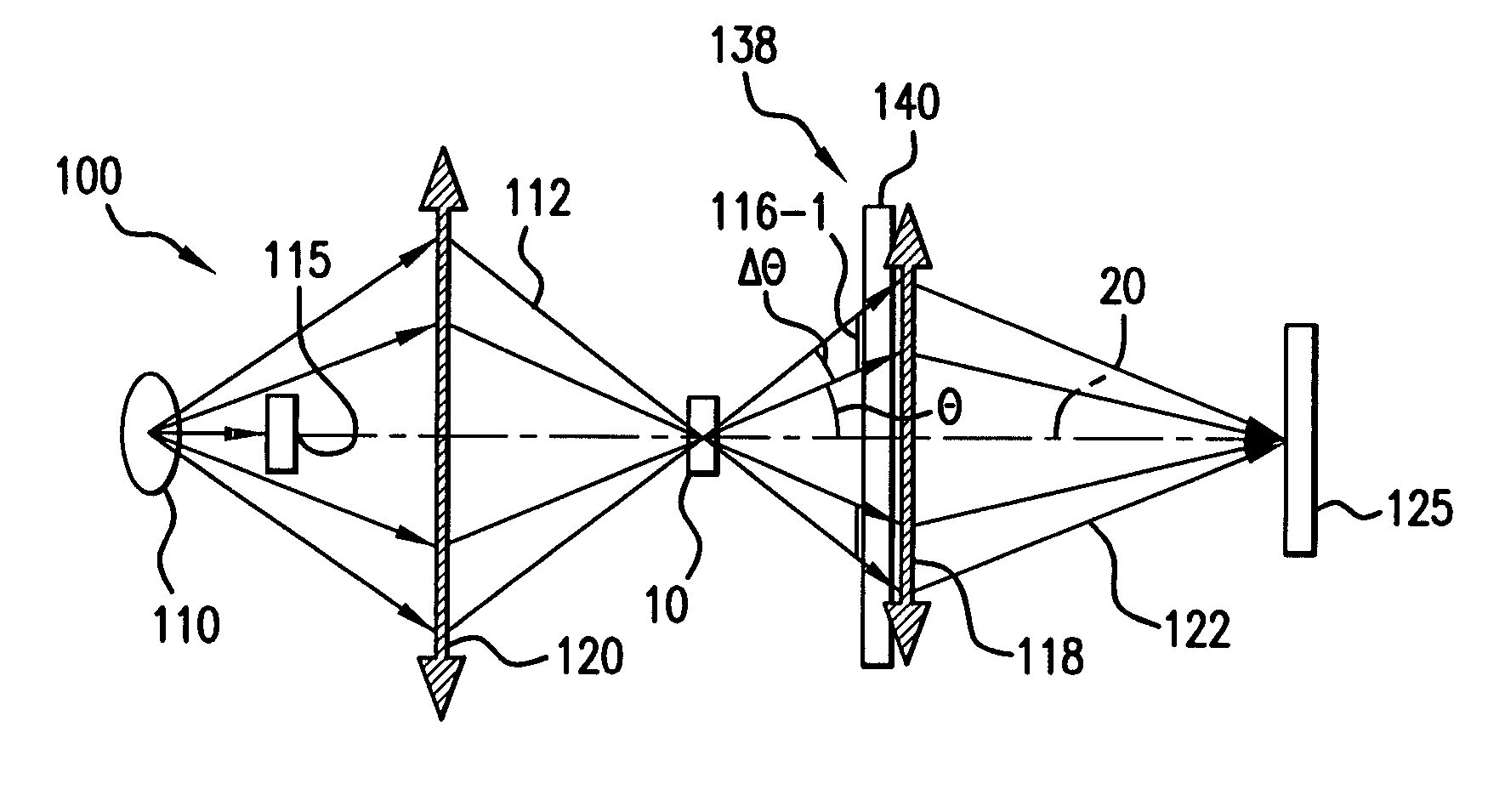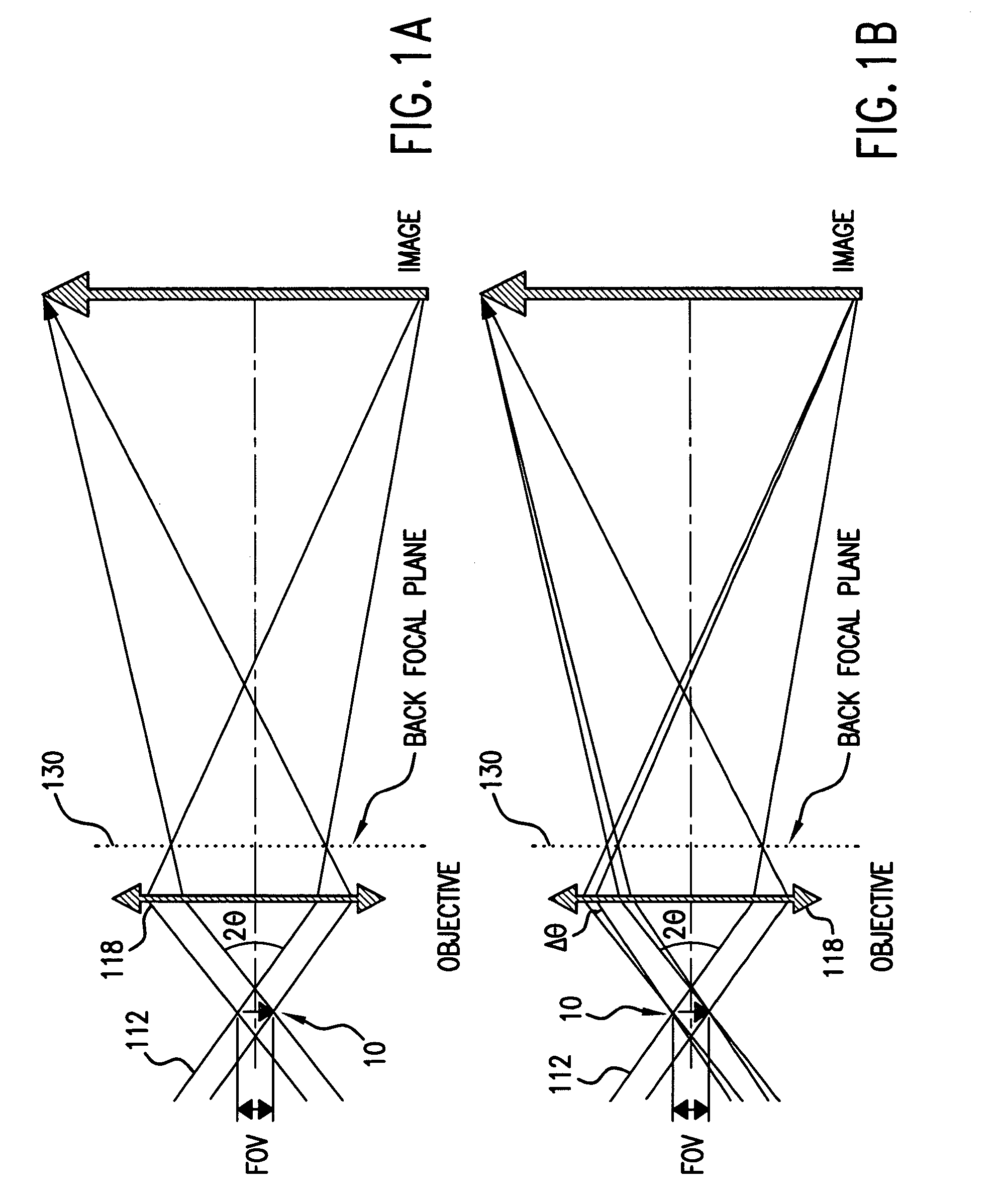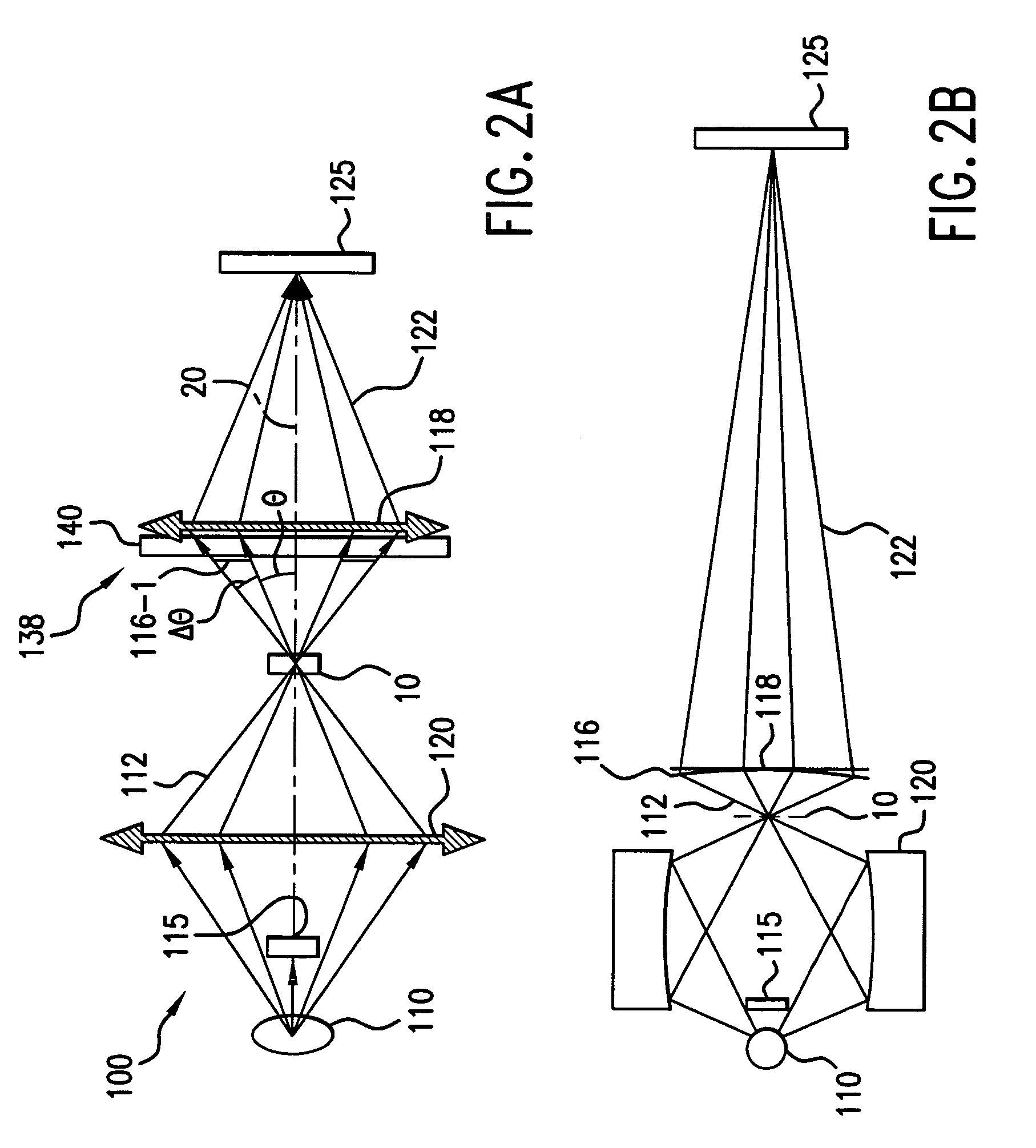Phase contrast microscope for short wavelength radiation and imaging method
- Summary
- Abstract
- Description
- Claims
- Application Information
AI Technical Summary
Benefits of technology
Problems solved by technology
Method used
Image
Examples
Embodiment Construction
[0030]FIGS. 1A and 1B schematically illustrate why phase plates are placed at the back focal planes of objectives in the typical phase contrast microscope configuration and the validity conditions for the phase contrast imaging configuration according to the present invention.
[0031]Four important parameters characterize the illumination beam 112: 1) the brightness B, 2) the field of view (FOV), 3) the mean numerical aperture NAc,=sin θ, and 4) the angular spread Δθ.
[0032]The photon flux incident on the test object 10 within the field of view (FOV) is proportional to B*2π*(1−cos θ), which approximately equals to (B*2π*sin θ*Δθ) for small θ. The exposure time is inversely proportional to this photon flux.
[0033]The brightness B is typically constrained by the device used. The source brightness and the throughput of the optical system relaying the photons from the source to the test object 10 to thus produce the illumination beam 112 dictate the level of the brightness.
[0034]Thus, for a...
PUM
 Login to View More
Login to View More Abstract
Description
Claims
Application Information
 Login to View More
Login to View More - R&D
- Intellectual Property
- Life Sciences
- Materials
- Tech Scout
- Unparalleled Data Quality
- Higher Quality Content
- 60% Fewer Hallucinations
Browse by: Latest US Patents, China's latest patents, Technical Efficacy Thesaurus, Application Domain, Technology Topic, Popular Technical Reports.
© 2025 PatSnap. All rights reserved.Legal|Privacy policy|Modern Slavery Act Transparency Statement|Sitemap|About US| Contact US: help@patsnap.com



